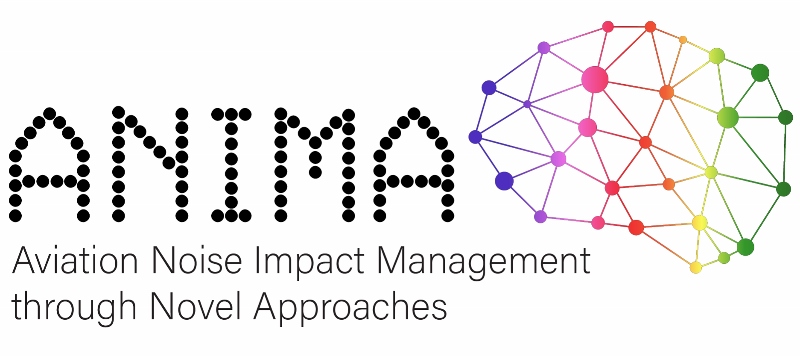Aviation Noise Impact Management through Novel Approaches (ANIMA)
By Dr. Graeme Heyes, Manchester Metropolitan University
Air transport contributes to social and economic development; however, the rate of growth is outstripping technological and operational developments, with the result that increasing numbers of people are exposed to aircraft noise. This is important because aircraft noise has significant implications for quality of life in affected communities, including to cardiovascular and mental health, the ability to concentrate, the ability to sleep well, and emotional wellbeing, including feelings of anger, frustration, and powerlessness.
ANIMA is a large, four-year research project funded (€7.5 million) by the Horizon 2020 Research and Innovation Programme of the European Union that commenced in October 2017, and it aims to address this problem.
ANIMA brings together 22 European partners, including airlines, airport operators, industry regulators, and universities. It differs from other research programmes on aviation noise that focus on lowering noise at source—for example, through technological development in engine and airframe design. Instead, ANIMA looks to reduce the impacts of aircraft noise as articulated by noise annoyance.
ANIMA aims to develop new methodologies and tools to manage and mitigate the impact of aviation noise and improve the quality of life of those who live near airports. Moreover, ANIMA will help coordinate national and EU research activity by establishing a common strategic research road map for aviation noise reduction, through the involvement of a pan-European network of experts and project leaders.
The project comprises a number of objectives. First, it will carry out a critical review and assessment of noise impacts and existing management practices to establish best practice guidelines for the effective management of annoyance beyond the European Noise Directive and the four pillars of the ICAO Balanced Approach:
- Reduction of noise at source
- Land-use planning and management
- Noise abatement operational procedures
- Operating restrictions

In so doing, this research will illuminate how international legislation and guidance surrounding airport noise have been transposed into national legislation and applied by airport operators, thus helping to develop a picture of best practice regarding airport noise and its impacts. The work will also consider lessons that can be learned from other sectors. From this, exemplification case studies will be undertaken to apply the identified best practice at partner airports. The study will also seek to develop a better understanding of annoyance to airport noise (including sleep disturbance) and improve the quality of life of those living in the communities that are impacted by airport noise. It will do this through pilot studies and surveys, by assessing new methodologies to reduce annoyance, and by testing novel and cost-effective solutions for land-use planning. Technology will play a role, with mobile (phone/tablet) applications being developed for the public. The project will also produce a 24/7 Noise Management Toolset to empower nonspecialists with decision support capability and a 24/7 Design Toolset for researchers to better understand airport noise and its impacts.
Importantly, the project outcomes will be disseminated widely and made publically available, including through an Aviation Noise Community Platform and by engaging with communities on the process of mitigating noise (i.e., through interventions under the ICAO Balanced Approach). Other outputs include a common strategic research road map for aviation noise reduction and the establishment of a European Aviation Noise Research Network.
Further information regarding ANIMA can be found on the newly launched website: www.ANIMA-project.eu. To learn more about my research or that of CATE, please email g.heyes@mmu.ac.uk.


